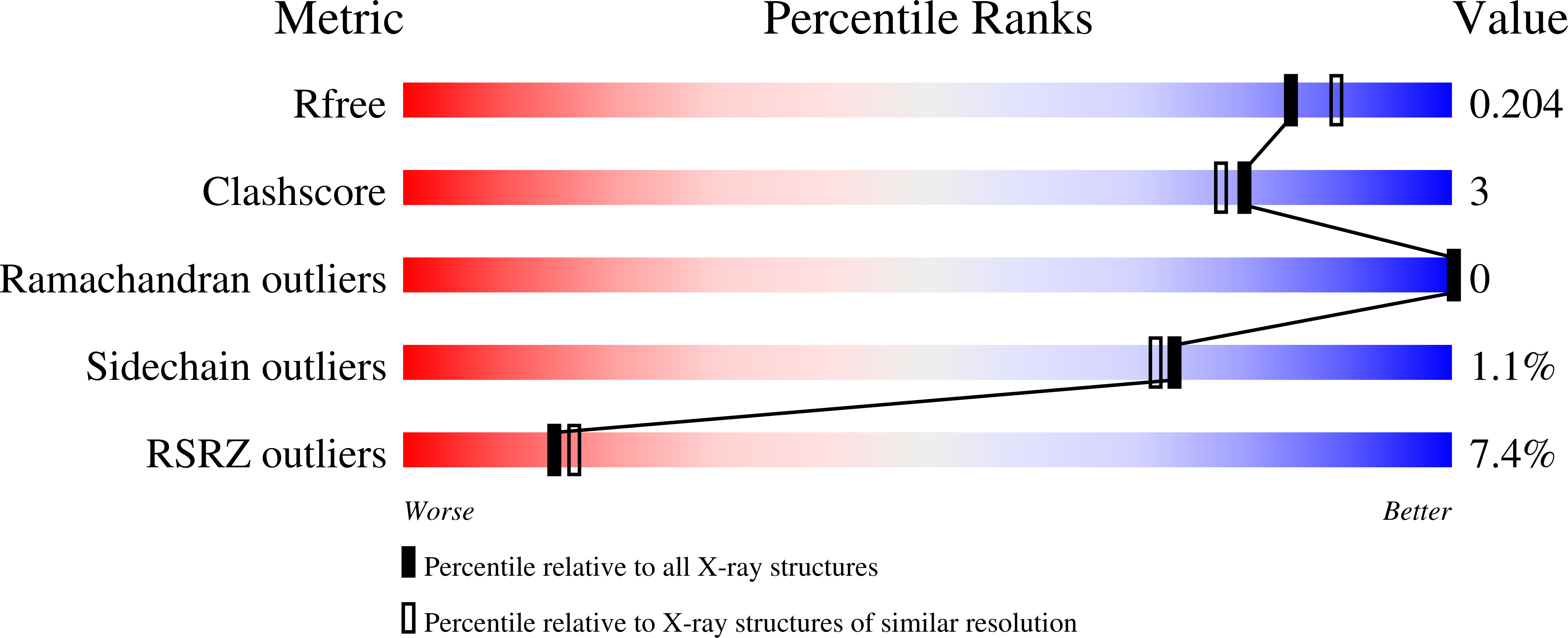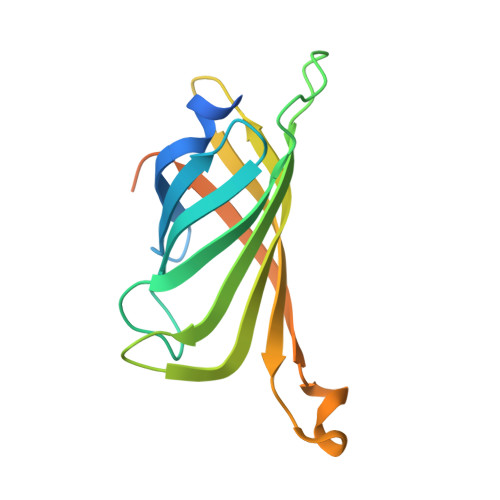Chemo-Genetic Optimization of DNA Recognition by Metallodrugs Using a Presenter-Protein Strategy.
Zimbron, J.M., Sardo, A., Heinisch, T., Wohlschlager, T., Gradinaru, J., Massa, C., Schirmer, T., Creus, M., Ward, T.R.(2010) Chemistry 16: 12883
- PubMed: 20878805
- DOI: https://doi.org/10.1002/chem.201001573
- Primary Citation of Related Structures:
2WPU - PubMed Abstract:
The mode of action of precious metal anticancer metallodrugs is generally believed to involve DNA as a target. However, the poor specificity of such drugs often requires high doses and leads to undesirable side-effects. With the aim of improving the specificity of a ruthenium piano-stool complex towards DNA, we employed a presenter protein strategy based on the biotin-avidin technology. Guided by the X-ray structure of the assembly of streptavidin and a biotinylated piano-stool, we explored the formation of metallodrug-mediated ternary complexes with the presenter protein and DNA. The assemblies bound more strongly to telomere G-quadruplexes than to double-stranded DNA; chemo-genetic modifications (varying the complex or mutating the protein) modulated binding to these targets. We suggest that rational targeting of small molecules by presenter proteins could be exploited to bind metallodrugs to preferred macromolecular targets.
Organizational Affiliation:
University of Basel, Department of Chemistry, Spitalstrasse 51, 4056 Basel, Switzerland.

















